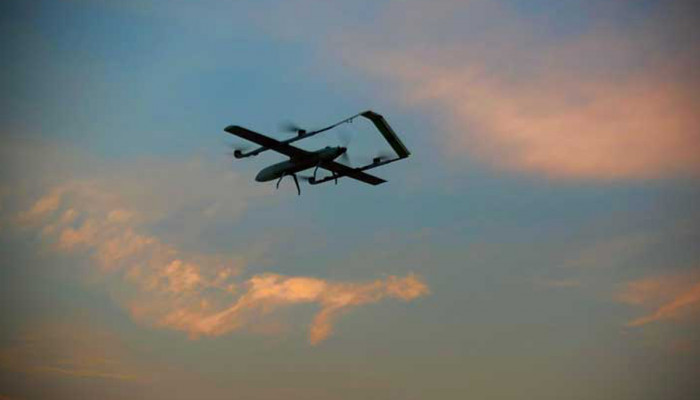Pakistan’s 'stealth drone' warfare against India, BSF says Chinese-origin UAVs hard to intercept
- In Reports
- 10:24 PM, Aug 12, 2024
- Myind Staff
Pakistan's growing reliance on advanced technology is creating challenges for Indian security agencies in countering threats from across the border.
Despite India's efforts to secure its airspace by installing more anti-drone systems and CCTV cameras, these measures have proven inadequate in light of Pakistan's increasingly advanced drone incursions.
In response to India's anti-drone measures, Pakistani entities sending drones into Indian territory have stepped up their efforts. Indian authorities have revealed that since last year, the number of drones crossing from Pakistan has not only doubled, but these drones have also become smaller, can fly up to 1 kilometre high, and are difficult to detect.
There is a Chinese connection to this threat as well. Most of these are made in China.
In a recent joint search operation, BSF troops and the Punjab Police recovered a made-in-China DJI Mavic 3 Classic drone from Punjab's Tarn Taran district.
The DJI Mavic 3 is a high-end drone renowned for its advanced imaging capabilities and flight performance. It features a 4/3 CMOS Hasselblad camera that delivers excellent image quality and is equipped with omnidirectional obstacle sensing, enabling it to avoid obstacles effectively. The drone also boasts a flight time of up to 46 minutes.
Inspector-General of BSF (Punjab Frontier) Atul Fulzele revealed in a recent press conference that since the start of the year, security forces have seized 137 drones, along with 28 weapons and 160 kg of heroin. Among the smuggled weapons were two AK rifles.
Fulzele explained that earlier, the drones deployed by Pakistan for illicit activities had a payload capacity of 3-4 kg, were easily detectable, and made noise. However, the newer versions are much more discreet, carrying only 500 grams and operating silently.
He mentioned that they could pinpoint the exact coordinates of where the drones took off, and since these drones are flown from locations very close to the International Border (IB), it suggests that their use is state-sponsored.
Fulzele also highlighted possible collusion between those flying the drones into India and the Pakistani Rangers, noting that when Indian security agencies raised this issue with the Rangers, they were consistently evasive in their responses.
The IG said that the Punjab government alone plans to install 3,000 AI-enabled CCTV cameras along the border to boost surveillance significantly, but the project is still under implementation.
Intelligence reports have suggested that drones are being used to drop packets of Afghan heroin, which is then utilised to fund terror activities in Kashmir and Punjab. Terror groups like Lashkar-e-Taiba, which maintains camps across the international border, are employing these Chinese-made drones to transport weapons, explosives, and drugs into India.
This surge in drone activity has coincided with a rise in terrorist incidents in Jammu and Kashmir.
BSF Special Director General (Western Command), Yogesh Bahadur Khurania, stated that the force is not only intercepting drones but is also collaborating with the police to trace their origins and identify those involved.
The BSF plans to enhance its capabilities by acquiring additional anti-drone equipment. Reports suggest that the Punjab and Jammu & Kashmir frontiers will soon receive indigenous anti-drone systems developed by the Electronics and Radar Development Establishment (LRDE) of the Defence Research and Development Organisation (DRDO).
This system, first tested in Punjab in 2020, includes a 1,000-metre-range laser weapon, a radio frequency jammer, and a GPS jammer/spoofer. Bharat Electronics Limited will be responsible for manufacturing these anti-drone systems.
Image source: The Week







Comments